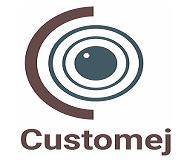Many factors impact the success of a website in terms of ranking on search engine results pages; however, one of the most important is user experience (UX). UX encompasses various components such as page speed, content structure, navigation, design, and more. Ultimately, they all combine to create an enjoyable, easy-to-use website for visitors. These elements directly influence how successful a site will be in organic search.
For example, if the page loading speed is slow and the design is outdated, users may become frustrated and leave before finding what they’re looking for. This can lead to a high bounce rate which will affect SEO rankings negatively. Additionally, an organized and well-structured website makes it easier for search engine crawlers to understand and index the content, leading to higher rankings.
Good user experience also has a positive effect on the time spent on page and click-through rate. When visitors spend more time browsing and clicking through different pages it tells Google that they are engaged with your website and it’s providing what they are looking for. This helps increase visibility across all of the search engines which results in higher rankings.
With all this in mind, user experience is an important part of the overall SEO process and should always be taken into consideration for any website or digital marketing strategy. By optimizing user experience you can increase visibility, engagement, and ultimately improve your rankings on search engine result pages. Not only does UX boost rankings directly, but the improvement in key metrics also leads to a further indirect boost.
How to Improve User Experience on a Website
In the second half of this guide, let’s look at some practical steps you can take to improve the user experience on a website. SEO for Arizona businesses isn’t always easy to do, so don’t be afraid to contact experts if you need help.
- Use Responsive Design: A responsive design helps to ensure that your content is easily accessible and legible on any device and across any platform, making navigation easier for visitors. If your website isn’t optimized for mobile, for example, then you’re missing out on potential traffic and sales, as more people are now using their mobile phones to access the internet.
- Make Navigation Simple: Navigation should be intuitive and easy to use. Consider the navigation structure of your website, refining it if needed to make it easier for visitors to find the information they are looking for.
- Optimize Loading Times: People don’t want to wait around for a web page to load. If loading times are too long, people are likely to leave. Make sure your website is optimized for speed, paying attention to things like the size of images and proper caching methods. When page loading speeds are fast, people will simply enjoy visiting your website rather than clicking away.
- Make Content Easy to Read: Content should be easy to read and understand. Creating content that is simple will make it easier for visitors to understand and appreciate. Use short sentences and sections, bullet points, or numbered lists to break up content into small chunks of information that are easier to digest.
- Make Sure the Content is Relevant and Fresh: Search engines use algorithms for ranking websites and one of the factors taken into consideration is the freshness and relevancy of content; consequently, content should be relevant to the topic and have a purpose. It should have a consistent message throughout and not be filled with irrelevant information. Additionally, content should be updated regularly to ensure that all information is accurate.




